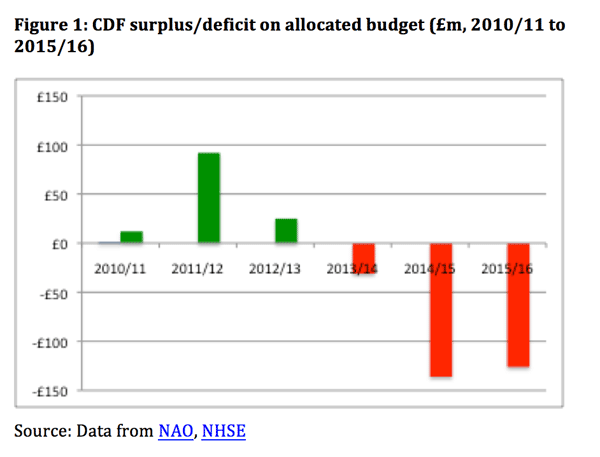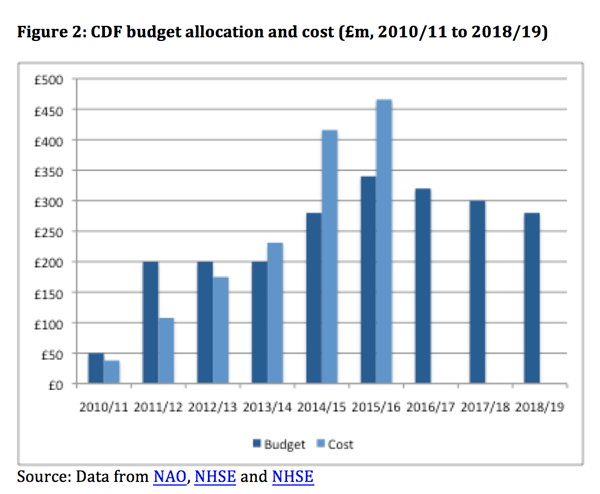UK: Time for a Rethink on Managed Access Spend?
If managed access is to be a widely available option, it makes sense to re-think just how much should be spent on it, writes Leela Barham.
There’s a lot of interest in managed access (and the other names it goes by; conditional reimbursement, managed entry agreements, managed access agreements, coverage with evidence development etc etc). Times are tough and there is a renewed focus on buying what works; sometimes it’s just not possible to be confident about that at launch.
For patients, managed access offers the opportunity to access a product and bypassing what can be lengthy standoffs between the payer and a company whilst they disagree on a ‘fair’ price. For companies, managed access might offer some reimbursement versus none and the prospect of a re-assessment of value once there is further evidence. For the health care system, it might mean spending some, but not as much as implied by unfettered access. Even better for all if it enables targeted use to help identify for which patients the new drug works and is worth it. That’s a tall order as it covers a multitude of issues; from what’s valuable, what evidence is robust, and what’s it worth, to whom.
Biggest trial of managed access in the NHS?
The English Cancer Drugs Fund (CDF) has a controversial past but in it’s new, 2016 incarnation, it includes the option for the National Institute for Health and Care Excellence (NICE) to recommend that a cancer drug is funded on an interim basis to enable further data to be collected. This is data on real patients in the real NHS setting, not the trial setting. Not everyone is happy to use such a pragmatic approach though. The data isn’t necessarily good enough for some, including Professor Karl Claxton who has concerns about bias in the data, amongst a host of other issues with the CDF.
The CDF might well be considered to constitute one of the biggest trials of managed access in the NHS. There are other examples, particularly with managed access agreements coming as a result of NICE looking at treatments for rare diseases. This includes access to Ataluren for nonsense mutation Duchenne muscular dyustrophy where all parties – NHSE, the company, the NHS, a patient organisation, and NICE – agreed the approach.
Although it remains to be seen how many drugs will end up in managed access schemes under the CDF, it could be enough to mean that there will be increasing experience with managed access; from the nature of the ‘contract’ to what further data can tell us. It could therefore set expectations for how to approach managed access in other therapies too.
How much to spend on managed access?
The 2016 CDF sees a number of financial controls; companies can expect to have to offer discounts to get on to the fund and may have to pay back at the end of the financial year to ensure that NHSE don’t go over the budget set for the CDF. This is to overcome past problems in busting the CDF budget.
The CDF budget initially started at just £50million back in 2010 and has steadily grown over time to £340million for the 2016/17 CDF. It has become over-spent too; it’s been NHS England (who are the ultimate payers) who have had to deal with the over-spend (Figure 1).

This means that NHSE has had to find the money from elsewhere (maybe the £1billion + in Pharmaceutical Price Regulation Scheme (PPRS) monies paid to date could have helped?). Not only that, but there have been ongoing criticism that actually more health could have been ‘produced’ if the CDF monies went to other areas of NHS spend, avoiding a host of problems, not least the accusation of perverse incentives for pricing.
It’s against this backdrop that the ‘new’ CDF budget has been set.
The British Oncology Pharmacist Association (BOPA) had warned that the initial £200million for the CDF was not enough; based on their efforts at forecasting back in 2010. They suggested the fund would need much more in the early years. The Rarer Cancer Foundation (RCF) said it would be enough. Although both were out in their predictions; at least they had a go at forecasting looking at need and pipelines to try to inform the scale of a fund that might be needed.
There is no evidence found in the public domain that the ‘new’ CDF budget has been re-looked at in light of it’s revised focus on managed access. The budget will decline: from the peak of £340million in 2015/16 – and it’s very far adrift from actual cost too (Figure 2).

The budget allocation for the 2016 CDF and future years seems to have arisen out of negotiation between the Association of the British Pharmaceutical Industry (ABPI) and the Department of Health (DH) as an addendum to the PPRS.
That came about because the 2014 PPRS didn’t cover within in it exactly how the CDF would sit inside the PPRS payments. The PPRS payments are, in effect, a rebate from PPRS member countries to the DH if spend on branded medicines is higher than allowable growth rates. Only some of the CDF spend counts towards the PPRS payments. This has to all intents and purposes set a target for CDF spending that NHSE wants to stay within; because they won’t get any more rebate if they spend more than that on CDF funded drugs.
There is no explicit explanation (at least found in the public domain) for why the budget for the CDF is set as it is over time. Some might be happy to see it decline given concerns about fairness or that the money could be better spent elsewhere. Maybe it also reflects optimism that more cancer drugs will be cost-effective the first time NICE looks at them? Or that companies will discount? But is it an appropriate amount to respond to need and to pay to generate the data to resolve uncertainty? Should it be more? Should it be less?
Setting an appropriate budget for managed access
If managed access is to be an option more widely available than just the CDF and for treatments for rare diseases – after all they are not the only therapy areas where there can be promising new drugs but there remain uncertainties at launch and beyond – then it makes sense to re-think just how much should be spent on such activities. Putting aside enough – but not too much – is always going to be tricky balance. But it’s probably worth a little time to think through rather than taking an arbitrary approach.
Leela Barham is an independent health economist and policy expert. You access her website here and contact her at leels@btinternet.com